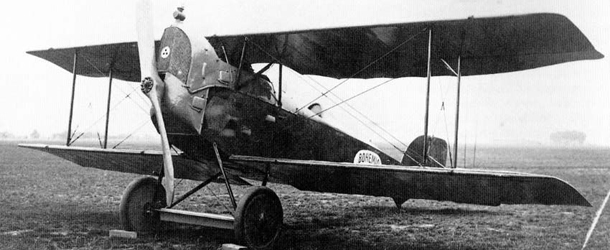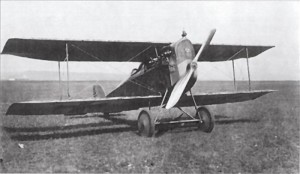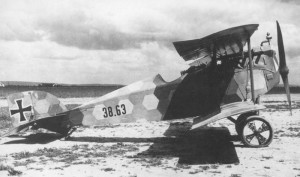The Aviatik D.I was a single-engine, single-seater fighter biplane that served the Austro-Hungarian Empire as a fighter and reconnaissance escort through the final years of World War 1. It was also known as the Berg D.I or the Berg Fighter because it was designed by Julius von Berg. The D.I was the first indigenously designed fighter aircraft of the Austro-Hungarian Air Service (Luftfahrtruppen).
In many respects, the D.I was a good combat aircraft. It was reasonably fast, had excellent flying characteristics and maneuverability, and could reach higher altitudes than most of its adversaries. In addition, it had a roomy and comfortable cockpit which gave a good field of view. The system eventually proved a capable combat aircraft with good speed, climbing ability, and service ceiling after correcting some deficiencies in the original design.
The D.I was designed to replace the Hansa-Brandenburg D.I series (a 1916 biplane designed by Ernst Heinkel with an ace-making, yet fatally accident-prone, legacy). Nevertheless, the D.I fought on until the closing bell of World War 1, with more than 700 manufactured.
Prototype development of the Aviatik D.I began in August 1916, while the first flight, marked 30.14, took place at 16 October 1916 at Aspern. Unfortunately the flight killed the test pilot. Further modifications were made, and three more prototypes of the Aviatik D.I were manufactured, labeled 30.19 (for tests on the ground), 30.20 (for tests in flight), and 30.21 (as a reserve airframe). These prototypes differed from the production aircraft in having a single unsynchronized Schwarzlose machine gun above the top wing, firing over the propeller.
Tests of the modified aircraft were positive. The first unit to receive the initial serial batch (with two synchronized Schwarzloses, one on each side of the cylinder block) of the Aviatik D.I was Fluggeschwader I (FLG I, later to be renamed to Flik 101G) on the Divača airfield in Slovenia.
The Aviatik D.I was manufactured under license by a numbers of subcontractors, as the Austrian Aviatik (38, 138, 238 and 338 Series); Lohner (115 and 315 Series); Lloyd (48, 248 and 348 Series); Magyar Általános Gépgyár (84 and 92 Series); Thöne und Fiala (101 Series); and WKF (184, 284 and 384 Series). Ordered, but not built, were the 215 and 201 Series from Lohner and Thöne und Fiala, respectively.
The main differences between the Series were in the power of Austro-Daimler engines used (185 hp in the early production aircraft, 200 or 210 hp in the mid-production, and 225 hp in the later ones), in the exact positioning of the machine guns, and in structural and radiator modifications. Until October 31, 1918, a number of the 677 Aviatik D.I airframes manufactured from all sources were handed over to the Austro-Hungarian Air Force.
Despite its desirable features, the new Aviatik fighter wasn't greeted with enthusiasm when it entered service in autumn 1917, as the type also had some serious defects which didn't endear it to its pilots. The early aircraft had structural deficiencies and their machine guns were installed beyond the reach of the pilot; if the gun(s) jammed, there was nothing he could do about it. These problems were later rectified with the strengthening of the airframe and the repositioning of the guns.
Design-wise, the Aviatik D.I was of a conventional single-seat biplane arrangement. Wings were fitted as an upper and lower staggered assembly of equal span with parallel struts and single bays. The Austro-Daimler water-cooled inline engine was fitted in the extreme forward portion of the fuselage and powered a twin-blade propeller.
The undercarriage was of a fixed arrangement with two main landing wheels and a tail skid. The spacious cockpit was situated aft of the engine at about amidships and offered a relatively good field of vision. The pilot sat behind the upper wing assembly (which was relatively close to the top of the engine compartment) behind a simple windscreen in an open-air cockpit.
The fuselage tapered into the empennage which featured a single large vertical tail fin and applicable horizontal planes. Performance specifications included a top speed of 115 miles per hour, a service ceiling of approximately 20,100 feet, and operational endurance totaling 2 hours, 30 minutes.
In the next article, you will learn about the history and the pilots of the three Aviatik D.I presented in the WW1 Wings of Glory Airplane Packs.
Information sources: Wikipedia, Military Factory, Museum of Flight, www.aviaarhiv.ru












Follow Us on